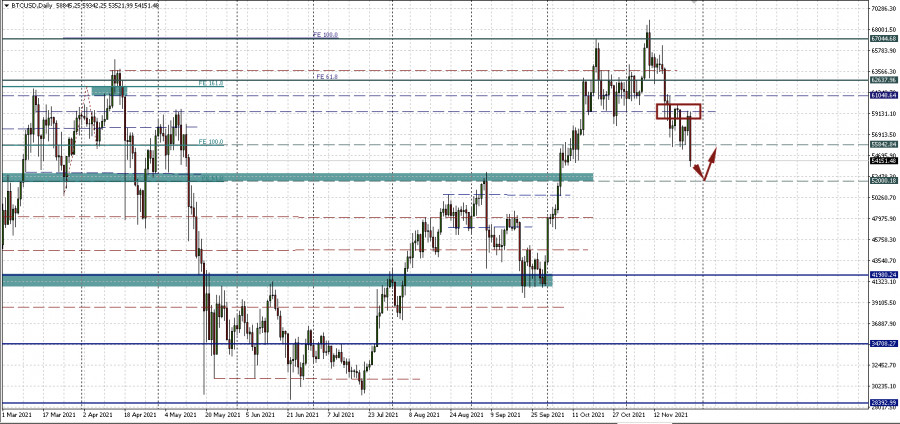
Black Friday suddenly turned into a red Friday for the cryptocurrency market. Bitcoin very skillfully bounced off the resistance of the 55,842.84 - 59,283.67 corridor and broke through its support. Now catch BTCUSD at $52,000 per coin.
What became the catalyst and how dangerous it is for the crypto market?
African Strain of Coronavirus or Thin Market?Markets were shocked by the news of the discovery of a new African strain of coronavirus on Friday. It is distinguished by a large number of still unexplored mutations, as well as a higher propagation rate.
Stock and commodity markets collapsed. Does this mean that bitcoin, followed by other cryptocurrencies, also collapsed amid the flight from risk? Perhaps.
But here, I think, it was not without the effect of a thin market due to the weekend in the United States. I'm not sure if this works the same on cryptocurrency exchanges as it does on the stock exchange, but I won't completely rule out the impact.
Is it worth buying back the fall?Analysts point out that Bitcoin could fall 20% from record highs and this is a great opportunity to "buy back the fall." For large market participants, it may be so, but for private traders, this is clearly not the best opportunity. Catching falling knives in the middle of the range is very risky for a small capital.
But when it will be possible to consider purchases, it is when the price reverses in the area of $52,000 per coin. The nearest support zone is visible there. I think the price may stop here. However, it is not necessary to open deals before a clear reversal is formed. It's such a time now where anything can happen locally.
Bloomberg claims bitcoin is "bearish"While some are recommending buybacks, popular trader and podcast host Scott Melker warned against following the crowd expecting to buy out even lower levels.
Funding rates on exchanges are a sign that sales are likely not over yet. They are still high despite the 24-hour liquidation volume approaching $700 million.
Melker also drew attention to an unusual correlation between the US dollar and bitcoin. He believes, as already noted above, that this is due to the impetus given to the market by fears around the virus.
Experts usually argue that Bitcoin tends to be inversely correlated with the US dollar, which, incidentally, collapsed on Friday against a basket of currencies.
However, now bitcoin has fallen along with the dollar index markets - the correlation (if any) turned out to be direct. There is a strange escape from risk.
Or is it just Black Friday?Nevertheless, a similar trend was already observed when at the end of November 2020, Bitcoin fell to about $16,400, but then recovered and for the first time in three years crossed the level of $20,000 per coin.
So maybe not everything is so critical yet. At least, in my opinion, there is no need to panic until the area near $52,000 per bitcoin is broken.
Meanwhile, other analysts argue that a heavy block of support in the form of buyers' positions at $53,000 stands in the way of further losses of BTCUSD. This is roughly the area that corresponds to Bitcoin's $1 trillion market cap.
